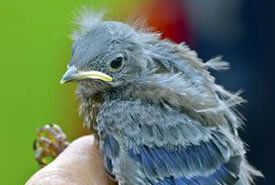It's December again. This time of year brings with it many diverse traditions. For some, it is also a time to be thoughtful. Perhaps it is thinking about loved ones, or reflecting on the year past.
It's also the season of the list: naughty list, nice list, shopping list, list of New Year's resolutions, and so on.
For those of us who are interested in the field of conservation biology, this time of year prompts us to be more thoughtful about lists of a different kind: the Committee on the Status of Endangered Wildlife in Canada, or COSEWIC as we tend to refer to it, ceremoniously completes a review of (in overly simplified terms) Canada's endangered species list at the end of each year.
At these annual meetings, species which have been previously reviewed and designated as "at risk" (endangered, threatened, special concern, etc.) are reconsidered according to the expiration date of their initial review. Other species come forward for consideration for the first time. The result is the affirmation of the status of endangered wildlife in Canada.
One might expect that in these times, when there is typically more bad news about the environment than good, that no at-risk species would experience an improvement to their dubious designation. Fortunately this is not the case. Sometimes down-listing a species from endangered to threatened or from threatened to special concern results from the committee's review.
Occasionally, this is due to better inventory data becoming available that suggests the critter is more common that was originally estimated. But at least sometimes, it is because there has actually been a marked improvement in a species' population.

Sea otter at the Vancouver Aquarium (Photo by Wikimedia Commons, Stan Shebs)
Take for example the sea otter. At one time hunted to the brink of extinction, the species was extirpated from Canadian waters in the late 1900s. Government policies banning the hunt came along just in time, as did re-introduction programs in the late 1960s and early 1970s. Shortly after the inception of COSEWIC, the species was ranked as endangered (1978), a status that was confirmed in 1986. A decade later, sea otters were down-listed to threatened as their numbers increased and they began to reoccupy their historic range on the BC coast. In 2007, they were considered again, and down-listed further to special concern.
Today, sea otters' population is in excess of 3,500 individuals and they now occur in more than 33 percent of their historic range. This good news story is a cause for celebration and hope for those of us who are dedicated to the cause of species at risk recovery, or concerned about biodiversity on planet Earth.
In the 2013 review of the Species at Risk List, two species were down-listed by COSEWIC: the wood bison and the rocky mountain tailed frog.
It seems quite simple at times: stop intentionally killing a species beyond sustainable levels and its population can recover. I wish it was always that simple. There are thousands of Canadians from all walks of life working tirelessly day in and day out to protect and enhance wildlife habitat, mitigate impacts of development and improve our knowledge of nature through research. Some of these people build on those efforts by focusing on recovering viable populations of species at risk.
But de-listing species from the endangered species list is not easy or simple. It takes time and significant resources, but it can be done. It is being done.
Federal and provincial government agencies are of course central to the efforts. However, private action on behalf of groups like the Nature Conservancy of Canada (NCC) plays an incredibly large and important role.
Take for example NCC's historic program of re-introducing plains bison to native prairie grasslands in Saskatchewan or the ongoing efforts on behalf of NCC and its partners to re-introduce breeding populations of the western bluebird to BC's Garry oak ecosystems.

Wood bison (Photo by Wikimedia Commons, Laslovarga)
This private action is made possible by thousands of hours of volunteer effort and financial support on behalf of Canadians coast to coast. Dianne Rutledge is one of eight or so local volunteers who spend every Wednesday morning tending the seedlings of yellow prairie violet and other endangered plant species at NCC's nursery in the Cowichan Valley. Each spring hundreds of rare plants grown from wild seed are planted back out into their native habitat, increasing their populations and area of occupancy.
Efforts such as these, aimed at de-listing species, are happening (at least in some small way) every day in Canada.

Baby western bluebird (Photo by Bill Pennell)
Despite these victories, the COSEWIC list is growing each year. Nevertheless, taking note of the positive changes to the status of species at risk on the list is a tradition and cause for thoughtful reflection for many conservationists. Down-listed or de-listed species provide a light that shines hope and encouragement for those of us working on species at risk recovery in Canada.
Together, and with increased effort, we can stabilize and rebuild Canada's natural legacies. I invite you to join us in doing so!
Written by Tim Ennis, west coast program manager for the Nature Conservancy of Canada (NCC). This post also appeared on Land Lines, the NCC blog.
